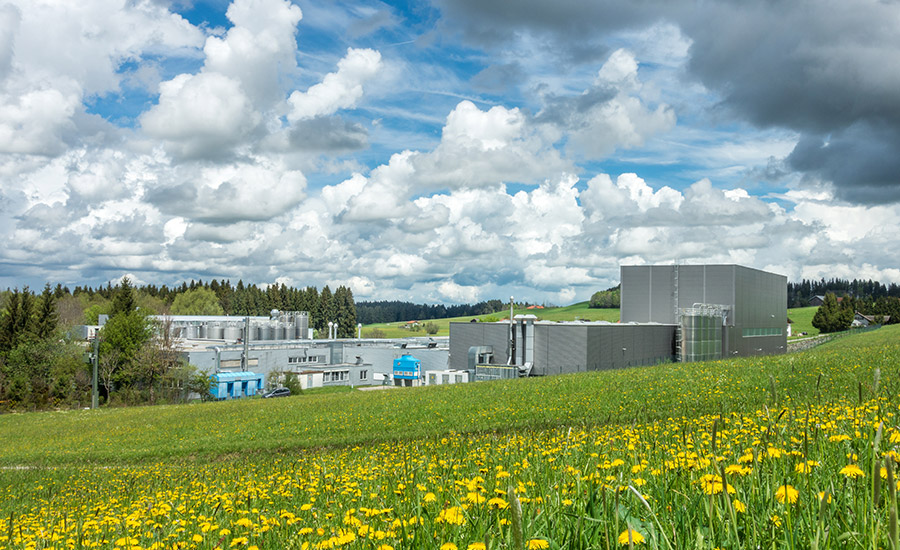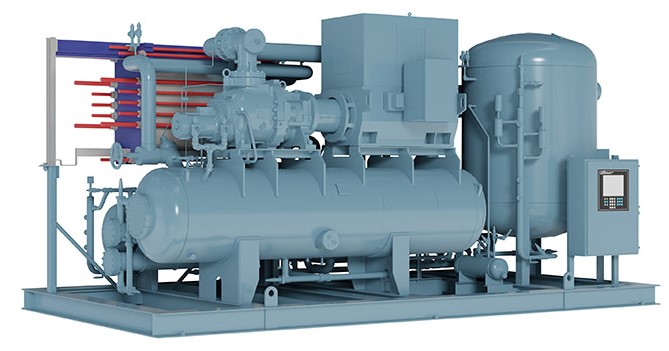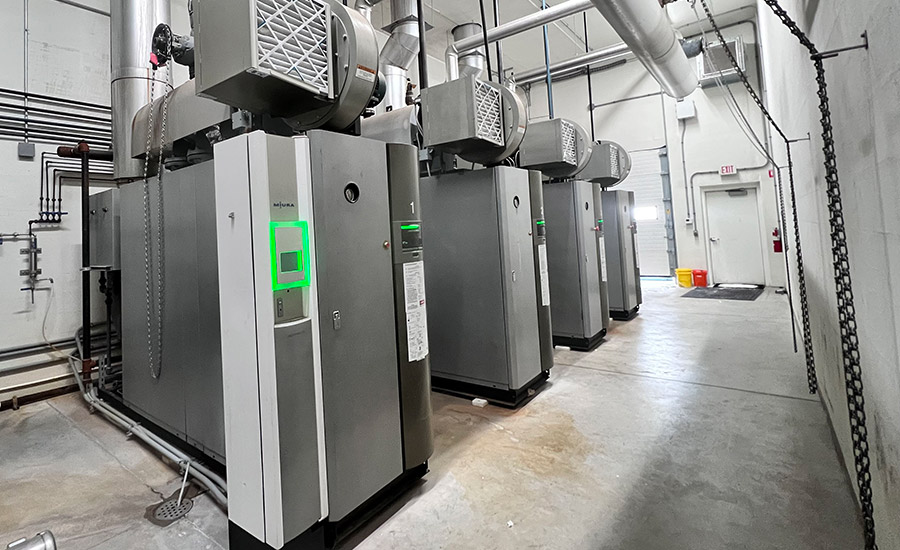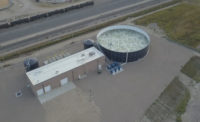Produced by Hanna-Barbera and airing in the 1960s, “The Jetsons” was a futuristic TV cartoon that featured flying aerocars with bubble tops, moving walkways and a space-age family (George, Jane, Judy, Elroy and dog Astro) living in a high-rise Skypad apartment with Rosie the Robot handling all household chores in Orbit City. While today’s dairy processing plants don’t include computer-generated holograms, elaborately designed automatic equipment and the ability to harness the power of water and wind into solar energy are just a few sustainability tactics construction engineers are utilizing to design and build the dairy plant of the future.
Experts note that streamlining dairy production through automation is a crucial step. Dublin, Ireland-based Research and Markets predicts that the warehouse automation market will climb to $41 billion by 2027, at a compound annual growth rate (CAGR) of almost 15% between 2022 and 2027.
“The growth of this market can be attributed to the growth in the e-commerce industry, multichannel distribution channels, e-grocery penetration with dark stores and ultrafast delivery services, globalization of supply chain networks, emergence of autonomous mobile robots and rising need for same day/same hour delivery,” the report states.
While much has been written about steps dairy processors should take to enhance sustainability efforts within existing facilities (e.g., treat and reuse wastewater, install LED lighting, etc.), Rao Kolla, director of process electrical/controls engineering, Jason Goode, process project manager III, and Gary Smallwood, process engineer III at Stellar, note that dairy plants are “very complex” factories.
“For instance, dairy manufacturing facilities need to be washed thoroughly every day. Clean-in-place (CIP) is a very huge opportunity to reduce water usage,” the Stellar Group states. “S88 batch standard provides the foundation to optimize wash cycles, reduce cycle time by effective means of washing and shorten CIP time to six hours instead of eight hours. Those extra two hours can be used to manufacture dairy products.”
A fully integrated firm headquartered in Jacksonville, Fla., Stellar focuses on design, engineering, construction and mechanical services for food and beverage plants, healthcare institutions and other industries worldwide.
When it comes to the multifaceted dairy industry, Stellar engineers highlight that the challenges standing between getting one’s product from pasture to consumer are vast and varied.
“The fresh product handling involved with dairy processing puts quality and safety at the forefront of the industry. Preventing contamination is both delicate and crucial,” Stellar’s website states. “To ensure optimum efficiency, quality and safety with our dairy clients, Stellar puts a sharp focus on mechanical, electrical and associated infrastructure needs, from the design phase through construction and operation.”
Depending on the type of dairy processing plant — cheese, milk, butter, etc. — the Stellar Group makes specific recommendations. “In cheese factories, there’s an opportunity to recover the water and use for other purposes like hot water, potable water. This will help to reduce [biochemical oxygen demand] (BOD) for wastewater,” Kolla, Goode and Smallwood suggest. “Solar panels will provide as an alternative source to reduce energy costs and a combined heat and power (CHP) system, also known as cogeneration, will recover heat from the systems (cooling tower, heat exchangers) and produce an alternative energy source.”

Milwaukee-based Johnson Controls, which facilitates smart, healthy and sustainable buildings, also shares tips for dairy processors to consider related to heating and cooling:
- Tabulate all heating needs and the temperatures required including processes, process rooms, offices, dry storage, etc.
- Tabulate all cooling loads and temperatures required including processes, process rooms, offices, product storage, etc.
- Consider using low or lower-GWP refrigerant mechanical refrigeration air handlers and chillers coupled with heat pumps to transfer heat and meet the needs of both.
- Consider thermal storage options to help balance energy (heat/cooling) availability versus energy (heat/cooling) needs.
- Gray wastewater may be a significant source of thermal energy that, using heat pumps, can reduce the need of combustion energy.
- Centralized control systems to optimize refrigeration cycle to provide energy savings. Control system should utilize variable speed drives and advanced system control to reduce energy usage of refrigeration system.
Sustainable equipment decreases carbon footprint
While designing the “dairy plant of the future” with all the sustainable bells and whistles costs considerably more than conventional design builds, a commitment to sustainable practices pays off in tangible and intangible ways, according to engineers.
Stellar engineers advise that sustainable dairy plants built from the ground up provide many opportunities:
- In manufacturing, companies can control labor and ingredients costs. Companies cannot control energy costs; every year they are increasing. Having a sustainable factory will help companies to reduce their manufacturing costs.
- Additional holding capacity for recovering of heat; additional CIP tanks to store the pre-rinse water; high efficiency motors; energy metering system; systems integration.

Kolla notes that once the factory is built, it can be extremely expensive to retrofit it into a sustainable factory. However, “It’s very cost effective to design the factory from day one with a sustainable strategy,” he advises. “Leverage state and federal government energy rebate programs. Some states provide incentives based on energy used per ton of product.”
Even though it is a high-ticket item at the outset, boilers that feature more integrated innovative technology that is still early in its life-cycle, lower overall operational cost — more cost upfront — and higher demand with less supply has “great payback to the customer in the terms of ESG ratings, which can drive or deprive investment funds. Also, less emissions creation which is taxed (carbon credits) in some regions and [is] more likely to spread as regulation gets more strict,” says Andrew Eklind, marketing manager at Miura America Co. Ltd., Rockmart, Ga.
“Perhaps, most importantly, the impact of future environment health for future generations, better image within community, and ‘sustainably made products’ can affect purchasing decisions,” Eklind continues. “As government regulations become more strict [regarding] burning fossil fuels, it’s smart to purchase equipment that helps reduce fuel usage which can also have local government incentives to help fund as well.”
Johnson Controls highlights that “while the upfront costs of sustainable plant design are initially higher, reducing energy and other operational savings can provide a payback in the long run. For example, sustainable plant design that uses data acquisition to optimize energy usage reduces natural gas consumption, increases electrical demand while reducing carbon footprint and can offset a lot of energy going to waste.”
In June, the Milwaukee, Wis.-based company unveiled its new FRICK Freezer Penthouse Evaporator-Retrofit (FPHE-R) model that includes design updates on proven technology to improve ease of installation and service for contractors while maintaining product efficiency.

Chris Paraskevakos, Johnson Controls’ vice president of product management, explains: “Our line of freezer evaporator units has been proven in the field for the past four decades, and we’ve heard our contractors’ input and advanced this product line to meet today’s industrial refrigeration challenges. These new updates to the unit’s reliability and serviceability help provide a cost-effective solution for building owners. The product line will further expand in the next year.”
Additionally, the FPHE-R unit weighs less than its predecessor due to its lowered height, making it more cost-effective to purchase while allowing for easier shipment. A rerouting of the low-voltage junction box brings electrical access to the exterior of the unit, eliminating the need for electrical penetrations by the contractor, while larger service doors provide easier access for maintenance and service, Paraskevakos states. An added roof membrane prevents moisture entrapment in building infrastructure, he adds.
Reliable, energy-enhancing freezers are not the only dairy plant necessity. High-efficiency steam boiler systems that save water and other sustainable equipment can decrease a facilities’ carbon footprint, conserve resources, and even save plants hard-earned cash, Eklind states.
Eklind suggests plants use a High Efficiency Boiler, noting that fire tube boilers, electric boilers, condensing boilers and water tube boilers all produce steam and have a rated efficiency — looking at how well the boiler converts a BTU input of fuel to a BTU output of heat/steam.
“Miura boilers boast some of the highest efficiencies for industrial steam boilers around 85% to 87%,” Eklind says.
When deciding on the right boiler system, Eklind recommends using an economizer, which recovers the waste heat and utilizes it to preheat incoming feedwater; a low-water content Quick startup boiler that enables the equipment to create steam in less than five minutes from the Off position in the case of a Miura boiler; and a modular system that can be turned on individually when needed.
“For example, if you have a 1,000 HP boilers system and your traditional set up is to acquire a 1,000 HP boiler or utilize a modular system that is built up from four 250 HP boilers. When the facility is requiring 250 HP of steam, the traditional system has to turn-down the large 1,000 HP boiler to 25% use of its power,” Eklind says. “…Whereas, in a modular system, if your facility demands only 250 HP of steam, the modular system will run only one 250 HP boiler units at peak capacity and ranks a higher efficiency of around 85% to 87%.”
Lastly, utilize Low NOx Boilers to curtail emissions from carbon dioxide (CO2) and nitrogen oxides (NOx). “NOx creation is related to flame temperature, the higher the temperature flame, the higher NOx created.,” Eklind explains. “The impact of one pound of N2O on warming the atmosphere is 265 times that of one pound of carbon dioxide. Local governances set limits on the amount of NOx that a boiler can produce.”
Top tips for sustainability success
Dairy Foods asked the experts to weigh in on the top three items/processes that dairy manufacturers should consider to build or retrofit a successful, sustainable dairy plant.
Stellar’s Kolla, Goode, and Smallwood recommend:
- Data/critical reports be available from day one. Reports will enable the research and development team to validate the product. This will reduce startup time and provide competitive advantage to introduce products in a shorter time.
- Equipment needs to be designed with required instrumentation and also with mix proof valves in lieu of manual swing connections.
- Air handling units needs to be designed for CIP applications.
- Sanitary and hygienic equipment design from trusted engineering companies.
- A manufacturing execution system (MES) to provide forward/backward genealogy, energy usage per each process order, and to analyze entry and discharge point of water and effluent.
The group notes that many dairy plants have obsolete control systems without real-time information because data is collected on paper and then entered into a computer. “Cloud base software system will eliminate the need for paperwork and minimal investment into technology will provide a lot of long-term,” the engineers state. “With the latest technologies, we can install IOT sensors to capture data. The biggest opportunity in the yogurt industry is base loss (milk). Capturing the amount of milk that is transferred from one system to other system will provide visibility on losses.”
Miura’s Eklind recommends a comprehensive system study so that plants can cater to and custom build a high efficiency boiler system that uses less fuel and produce less emissions. This is particularly important since fuel costs account for 75% of the boiler’s lifetime energy costs, so efficiency points go a long way.
“Sustainable equipment tends to be more ‘smart’ and include more system automation. This reduces the operator requirements and allows workers to spend more time doing other important task, which can help the facility run more smoothly,” Eklind concludes. “With the smart equipment, more sensors are used that can help to detect problems before they become serious. This produces a more reliable, sustainable system.”




